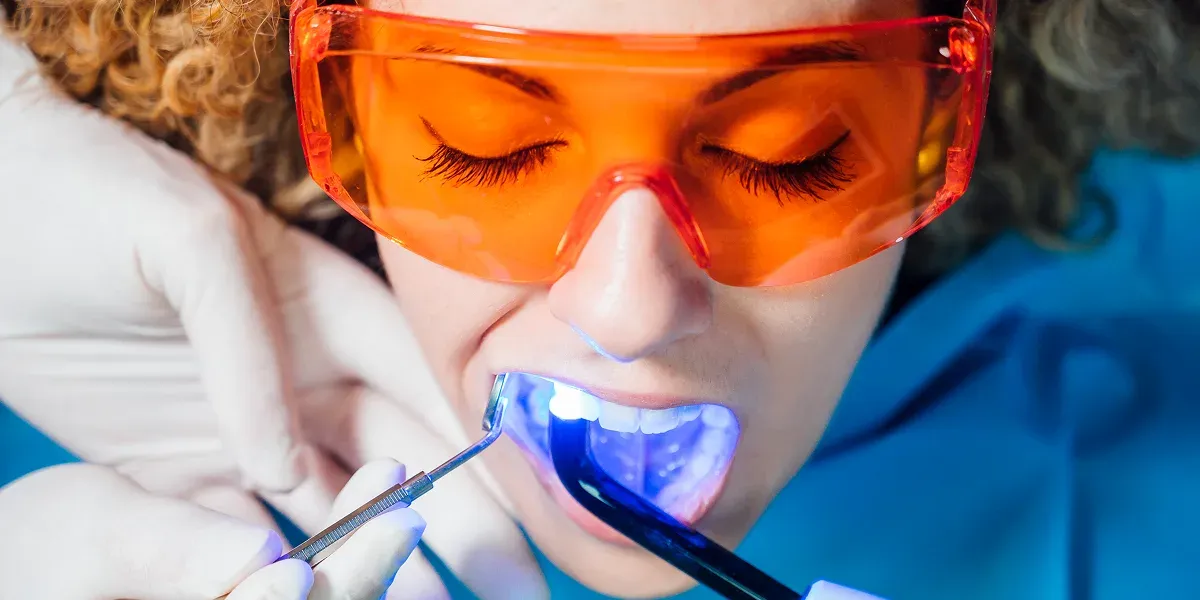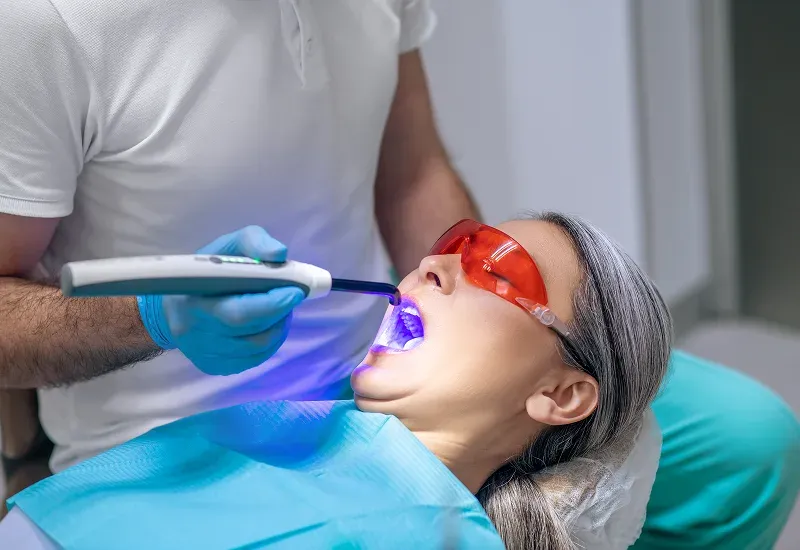What Is LANAP Laser Surgery? A Minimally Invasive Solution for Gum Disease
by Dr. Labeeb
10 June 2025

Hearing you need gum surgery can feel stressful. Many people imagine painful procedures, long recovery times, and complicated healing. If you have gum disease and your dentist or periodontist mentions LANAP laser surgery, it is normal to wonder what it actually means and whether it is a better option than traditional surgery. LANAP offers a different approach. It uses lasers instead of scalpels to treat gum disease. If you are deciding how to move forward, knowing exactly what LANAP laser surgery involves can help you feel prepared and confident about your choices.

Understanding Gum Disease and Why Treatment Matters
Gum disease, or periodontal disease, is caused by bacteria that build up around the gums. Over time, this bacteria causes the gums to pull away from the teeth. It also damages the bone that supports teeth. If left untreated, gum disease can lead to tooth loss and other health issues.
In the early stages, called gingivitis, simple professional cleanings and better home care can often reverse the problem. But once gum disease becomes more advanced, deeper treatment is needed to remove bacteria under the gum line and stop further damage.
Traditional gum surgery usually involves cutting the gums to clean infected areas and reshape the tissue. LANAP laser surgery offers another method without cutting.
What Is LANAP Laser Surgery?
LANAP stands for Laser-Assisted New Attachment Procedure. It is an FDA-cleared protocol that treats advanced gum disease using a specific laser called the PerioLase MVP-7. Instead of using scalpels to cut away infected gum tissue, the laser targets and removes only the diseased tissue, leaving healthy tissue untouched.
The laser also kills bacteria and stimulates the gums and bone to regenerate naturally. LANAP surgery is done in a dental office under local anesthesia, much like getting a dental filling.
Understanding what makes LANAP different helps patients make decisions based on real facts, not assumptions.
How LANAP Works Step-by-Step
During LANAP laser surgery, the dentist uses a thin fiber about the width of three human hairs. This fiber is inserted between the tooth and gum to reach the infected tissue and bacteria.
First, the laser targets and destroys the bacteria and infected gum tissue. Then, the dentist uses ultrasonic instruments to remove tartar and plaque buildup from the tooth roots. After that, the laser is passed through the area again to seal the gum tissue against the tooth, creating a natural barrier that encourages healing.
No stitches are required because the laser encourages blood to clot and the gums to reattach naturally.

What Makes LANAP Different From Traditional Gum Surgery?
Traditional gum surgery often involves cutting the gums to access the infected area. Some healthy tissue may also be removed to reshape the gum line. Patients usually need stitches, and the gums may look shorter afterward because of tissue loss.
LANAP does not require cutting or stitching. It selectively removes diseased tissue while preserving healthy tissue. Patients who undergo LANAP often keep more of their natural gum structure.
Because LANAP is less invasive, there is usually less swelling, bleeding, and discomfort compared to traditional surgery. The recovery process also tends to be quicker.
Who Is a Good Candidate for LANAP?
LANAP laser surgery is designed for patients with moderate to severe periodontal disease. It is often recommended for patients who:
- Have deep pockets between the teeth and gums
- Have bone loss around the teeth
- Want to save natural teeth instead of extracting them
- Prefer a less invasive treatment option
However, LANAP is not always suitable for everyone. Patients with certain health conditions or medications that affect healing may need a different approach. A full dental evaluation, including X-rays and a clinical exam, is needed to determine if LANAP is the right choice.
Benefits of LANAP Laser Surgery
Many patients look into LANAP because they want to treat gum disease without major surgery. Some of the benefits include:
- Preserving more natural gum tissue
- Reducing the need for tooth extractions
- Shorter recovery time compared to traditional surgery
- Minimal post-operative discomfort
- Less risk of infection because the laser sterilizes the area
These benefits make LANAP a strong choice for many patients who want effective treatment with less disruption to their daily lives.
What to Expect During LANAP Recovery
Recovery after LANAP laser surgery is different from traditional gum surgery. Most patients can return to work or normal activities within a day or two, depending on how they feel.
Patients are usually advised to stick to a soft diet for about a week to protect the healing areas. Foods like scrambled eggs, yogurt, mashed vegetables, and soft pasta are good options. Hard, crunchy, or spicy foods should be avoided during the early healing phase.
Brushing and flossing techniques are also adjusted temporarily. Dentists usually recommend special mouth rinses to help keep the mouth clean without disturbing the healing gums.
Follow-up visits are scheduled to monitor healing and adjust home care instructions as needed.
How LANAP Promotes Natural Healing
One of the major advantages of LANAP laser surgery is how it promotes the body's natural healing abilities. The laser not only removes bacteria but also stimulates the body to rebuild bone and gum tissue. This biological healing process is different from traditional surgery, which often focuses more on removing damaged tissue than encouraging new growth.
In clinical studies, LANAP has shown success in creating new attachment between the gums and the teeth, as well as regenerating bone around previously compromised teeth. This regeneration helps maintain the long-term health and stability of the teeth.
What Happens If Gum Disease Is Left Untreated?
Untreated gum disease does not just stay the same. It gets worse over time. Without treatment, gum disease can lead to:
- Tooth loss
- Chronic bad breath
- Gum recession
- Bone loss in the jaw
- Increased risk for other health problems like heart disease and diabetes
LANAP provides an option to stop disease progression without the need for more invasive surgery.
Preparing for LANAP Laser Surgery
Before LANAP treatment, your dentist will complete a full periodontal exam. This includes measuring the depth of pockets around your teeth and taking X-rays to evaluate bone levels. You will be given instructions on what to do before your procedure, including any adjustments to medications.
If you take blood thinners or have other health conditions, your dentist and medical doctor may coordinate to ensure the procedure is safe for you.
On the day of the procedure, eat a light meal unless instructed otherwise. Arrange for transportation if sedation will be used.
Long-Term Care After LANAP
LANAP treatment is not the end of care for gum disease. It is part of a larger plan to keep your mouth healthy. After LANAP, regular dental cleanings are essential. Dentists often recommend more frequent cleanings, such as every three to four months, instead of the standard six months.
At home, patients must continue to brush and floss carefully and follow all home care instructions provided by their dentist.
Avoiding tobacco products is especially important, as smoking can slow healing and worsen gum disease.
Keeping up with regular follow-up visits and daily care helps protect the investment made in treating your gums.
Conclusion
LANAP laser surgery offers a minimally invasive solution for treating gum disease that fits many patients' needs and lifestyles. It preserves healthy tissue, encourages natural healing, and helps protect your natural teeth. If you are looking for a real solution to manage gum disease without traditional surgery, LANAP may be the right choice.
Our dental team is ready to answer your questions and help you take the next step. Contact us today to schedule a consultation and find out if LANAP is right for you.
Contact your Dentist today at Studio city Dental, to learn more about What Is LANAP Laser Surgery? and A Minimally Invasive Solution for Gum Disease.
Resource:
Why Invisalign Is the Top Choice for a Straighter Smile in North Hollywood
Share This:
Disclaimer
*This media/content or any other on this website does not prescribe, recommend, or prevent any treatment or procedure. Therefore, we highly recommend that you get the advice of a qualified dentist or other medical practitioners regarding your specific dental condition. *

